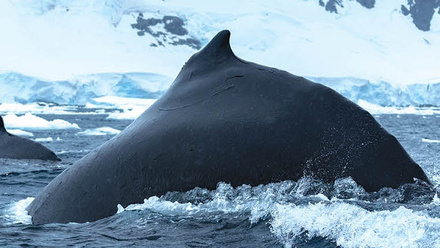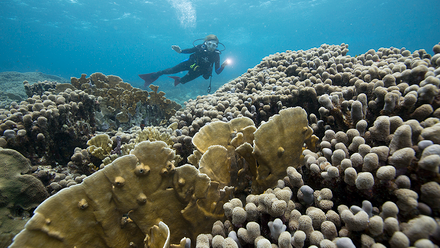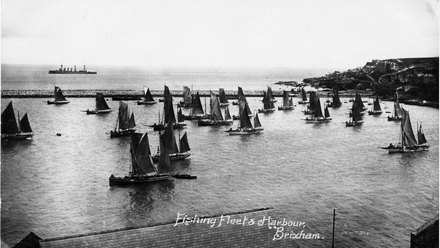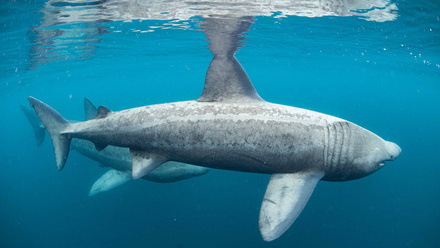Evolution of the pelagic ecosystem: a history written in tiny teeth
Modern humans have been around on the Earth for about 200,000 years, a blink of an eye in the 4.5 billion year history of the planet. In the past 85 million years and beyond, the Earth has experienced profound and extreme climatic, tectonic, and biological events that make the ice ages seem small, each leaving its mark in the geological record, and changing the course of evolution on the planet. While none of these events is a perfect analogue for the modern anthropogenic global change, by studying the Earth’s past, palaeoceanographers and palaeontologists can find patterns in how life on the planet has responded to global change, to better understand the mechanisms driving the evolution of life on the planet.
The microfossil record
Deep below the ocean floor is a time capsule, in the form of ancient mud and ooze, that preserves snapshots reaching back millions of years into Earth’s past. Preserved in the mud, and often comprising the mud itself, are tiny microfossils, so small that thousands can fit on the head of a pin, but which, together with geochemical signals and isotopes preserved in the sediment, reveal a fascinating history of how life, climate, and the ocean environment have coevolved through time.
While the most abundant deep-sea microfossils are the calcareous or siliceous remains of unicellular plankton, other members of the ocean ecosystem, such as fish, are also represented. The majority of a fish’s body comprises soft tissue, and thus rarely preserved after death, but their teeth are particularly durable, and preserve well in the corrosive waters of the deep sea. These isolated teeth, together with dermal scales of sharks, called denticles, and occasional fragments of bone, comprise one of the most complete fossil records of vertebrates in the world. Together, these microfossils, which are composed of calcium phosphate (bioapatite), are called “ichthyoliths”, which literally translates to “fish stones” (Fig 1). Because a single chunk of sediment may contain several hundred or thousand ichthyoliths, ichthyolith assemblages preserved in tens or hundreds of metres of deep-sea sediment core can reveal patterns of both fish abundance and fish community structure through time.
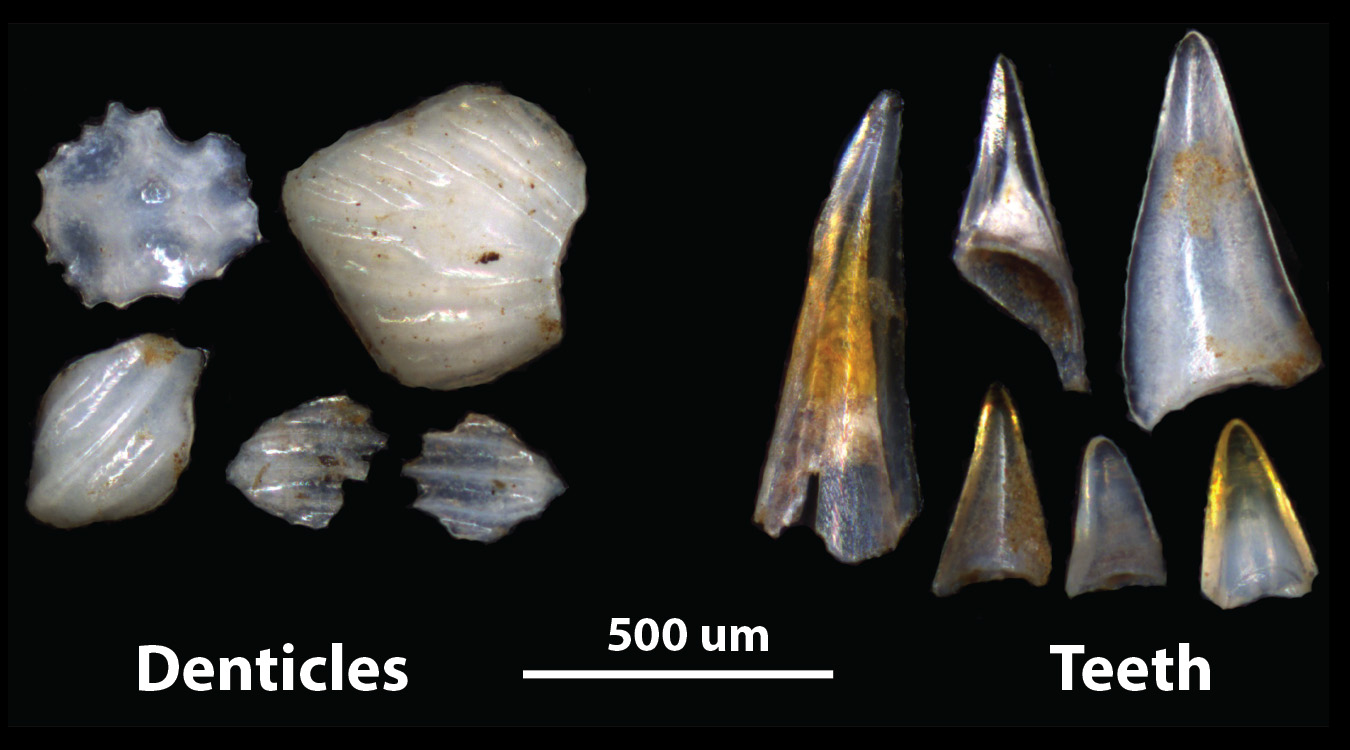
Figure 1. Example ichthyoliths from the South Pacific gyre, from the Eocene (~45 million years old). The scale bar is 500 μm. Images taken by the author using the Hull Lab Imaging System at Yale University.
Three pelagic ecosystem states
The modern open ocean has many vertebrate consumers: fish, sharks, whales, and other charismatic megafauna. A typical modern ichthyolith assemblage has hundreds of teeth, and a smattering of denticles, perhaps one in 50. However, it has not always been this way. In the last 85 million years, the pelagic ecosystem has existed in three distinct stable states, each lasting 10s of millions of years, with abrupt transitions between them (Fig 2).
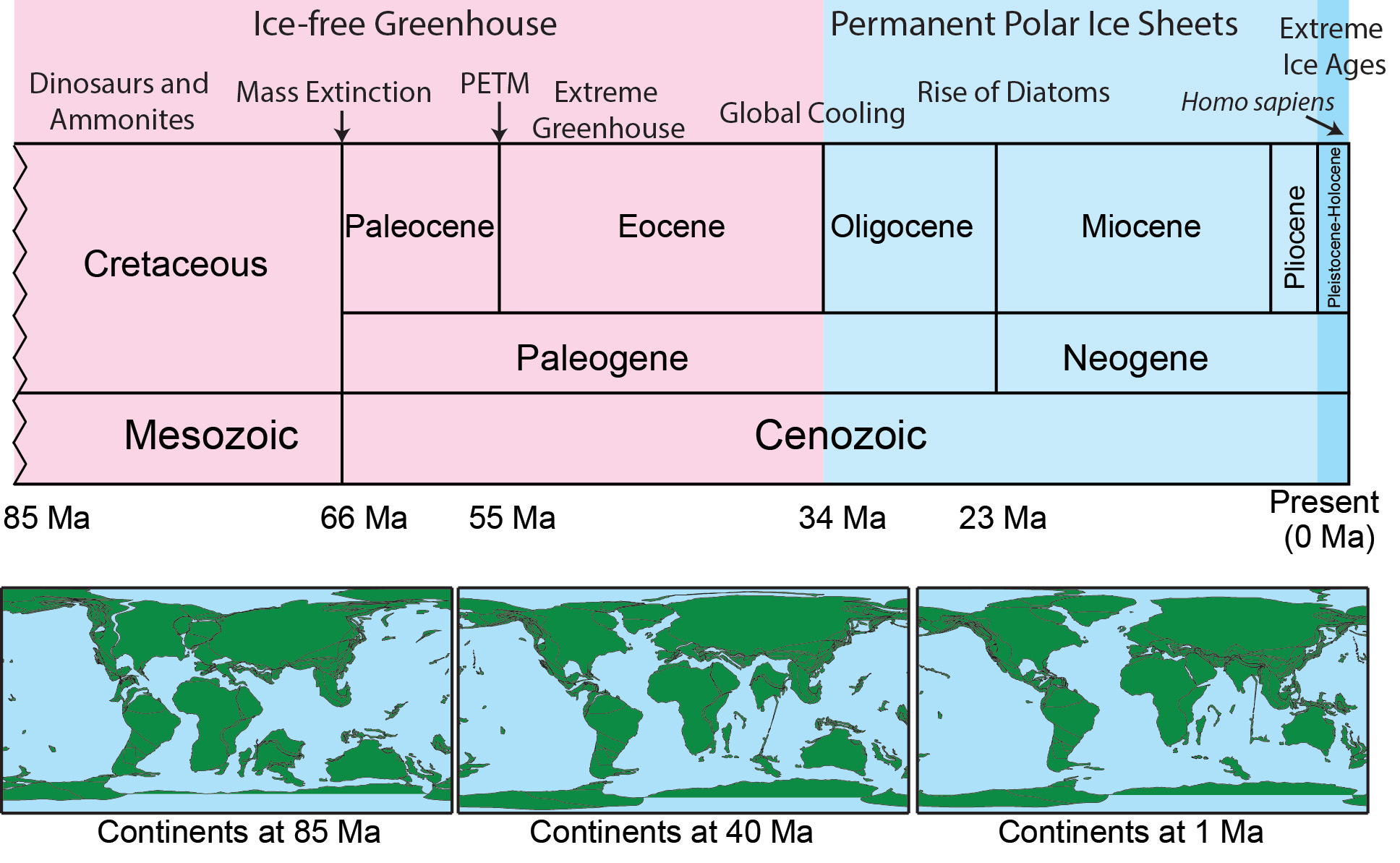
Figure 2. A geological time scale showing some major events and transitions in Earth’s history (above) and continental configurations for the same time period (below). Maps modified from the Ocean Drilling Stratigraphic Network Plate Reconstruction Service (odsn.de).
Stepping back 85 million years, to the Cretaceous Period, ichthyolith assemblages are considerably different from the modern. In the Cretaceous, denticles outnumber teeth in most assemblages, and are considerably more abundant than they are in modern assemblages. While teeth were present, they were relatively rare, and did not come close to reaching modern levels of abundance. This suggests that in the Cretaceous, sharks had a much larger role in the open ocean, and while fish were present, they were not as significant—sharks and other marine consumers were likely relying on ammonites and other Cretaceous mesopredators as their main source of prey. An asteroid impact, 66 million years ago (Ma) ended the stable Cretaceous ecosystem, allowing bony fish to take over newly vacated ecological niches. While sharks did not decline in absolute abundance, the post-extinction Paleogene ecosystem yielded ichthyolith assemblages with 5 times as many teeth as denticles. Indeed, this 5:1 ratio of teeth to denticles remained stable for the next 45 million years. Extreme swings in climate, correlated with changes in absolute ichthyolith abundance, with both ichthyolith types increasing and decreasing multiple times throughout the Paleogene period. Indeed, the highest abundances of ichthyoliths observed in the past 85 million years, nearly 10 × Cretaceous levels, were observed during the warmest part of the record, about 52 Ma, while the ratio between teeth and denticles remained constant.
However, this stability was once again interrupted, at 20 Ma, with the near complete disappearance of denticles from the open ocean. While there is no major climate change event, nor any obvious mass extinction at this time, two clues to the cause lie in the fossil record. First, many other marine predators began to diversify and spend time in the open ocean during the early Miocene, including seabirds, marine mammals, and even large schooling fish such as tuna. Second, there is a considerable increase in variability of both export productivity and ichthyolith abundance beginning with the Miocene, at about 23 Ma. While these changes do not align perfectly with the 20 Ma shift in the ichthyolith assemblages, it is possible that increasing variability in primary production, and increasingly patchy food supply, drove pelagic consumers towards more migratory ways of life, driving sharks to spend less time in the gyres, and thus leaving fewer denticles behind. As the shift from Paleogene to Modern ecosystem state occurred rapidly, it is likely that a critical threshold in variability was reached, causing a collapse of the formerly stable ecosystem.
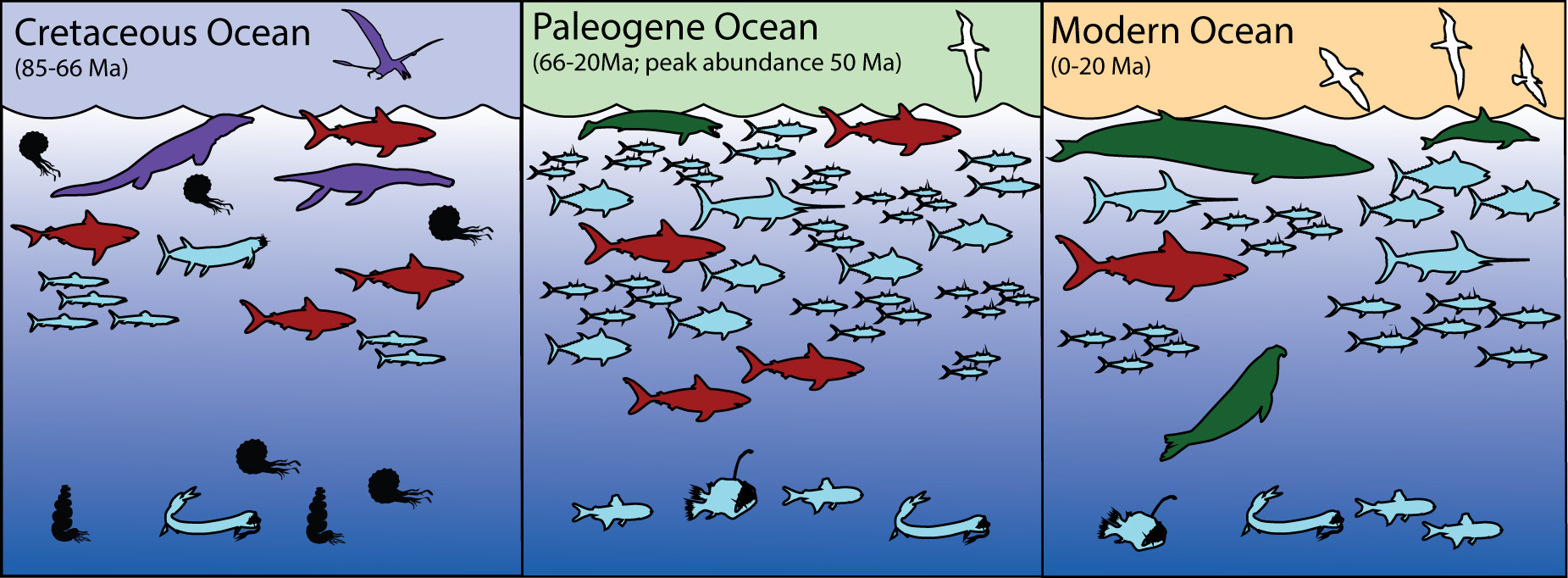
Figure 3. A cartoon schematic reconstructing the marine consumers present in each of the three ecosystem states discussed in this article. Purple are marine reptiles, black are ammonites, red are sharks, light blue are bony fish, green are mammals, and white are seabirds. Image reproduced from Sibert et al 2016, Proceedings of the Royal Society. Series B.
Anthropogenic impacts
While “climate change” typically comes to mind as the major human impact on the environment, the ichthyolith record suggests that extreme and rapid changes in ocean temperature, even on the order of 4–8°C (7–14°F) of warming or cooling, were not responsible for pelagic ecosystem restructuring. Far more detrimental to the ancient fish communities, were rapid shifts in predator–prey interactions. Indeed, while anthropogenic climate change alone probably would not have had a major effect on the structure of the pelagic community, other human impacts on the ocean, particularly overfishing and removal of top predators such as sharks, large fish, and whales, could mark the beginning of a new, profoundly different open ocean ecosystem regime.
Elizabeth Sibert, PhD (esibert@fas.harvard.edu) is a Junior Fellow in the Harvard Society of Fellows, Harvard University. This work was done in collaboration with Professor Richard Norris, at Scripps Institution of Oceanography, at University of California San Diego.
Further reading
Sibert, E., R. Norris, J. Cuevas and L. Graves (2016). Eighty-five million years of Pacific Ocean gyre ecosystem structure: longterm stability marked by punctuated change. Proceedings of the Royal Society of London B: Biological Sciences 283 (1831).
Sibert, E. C. and R. D. Norris (2015). New Age of Fishes initiated by the Cretaceous−Paleogene mass extinction. Proceedings of the National Academy of Sciences of the United States of America 112 (28): 8537–8542.


